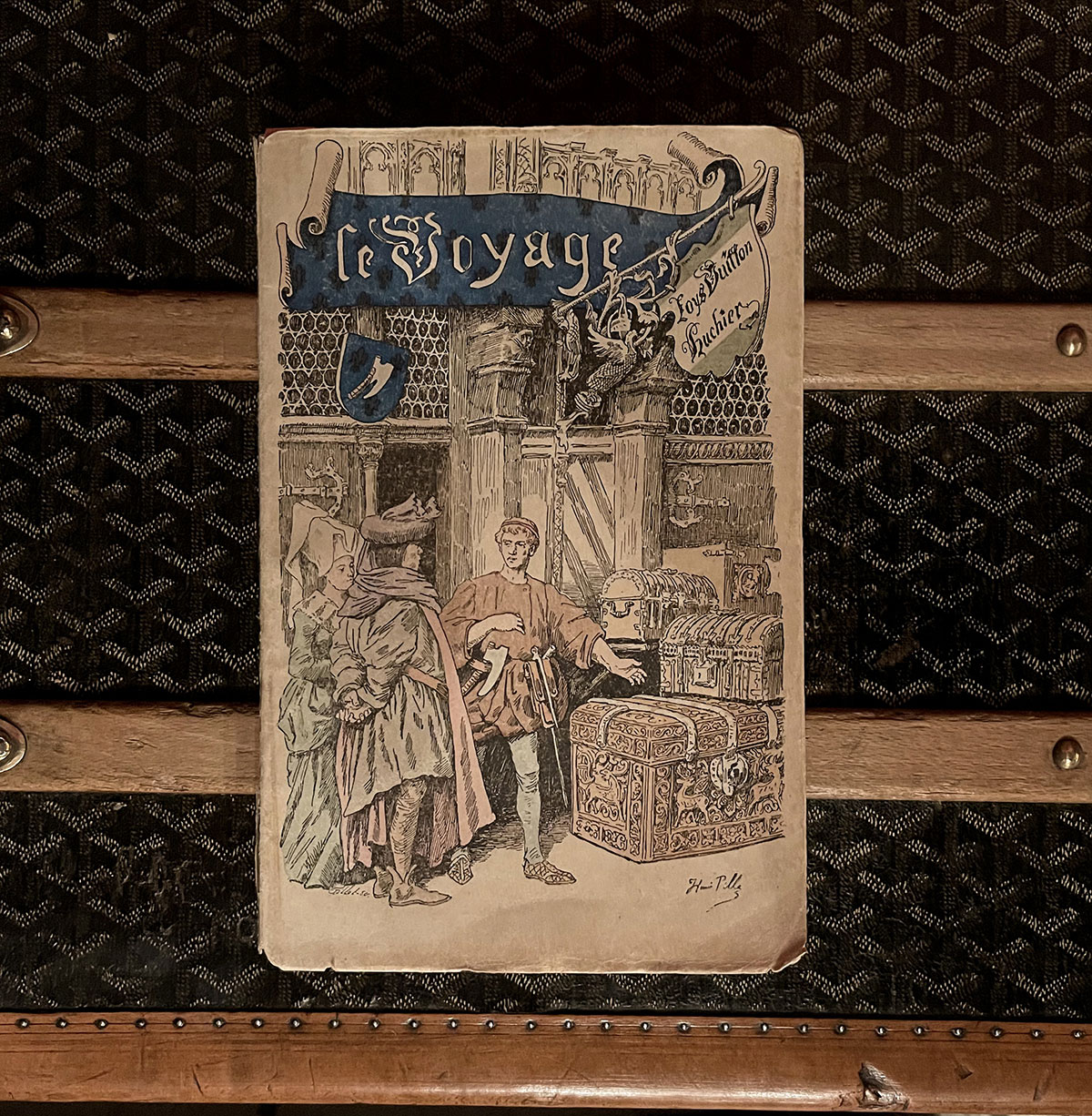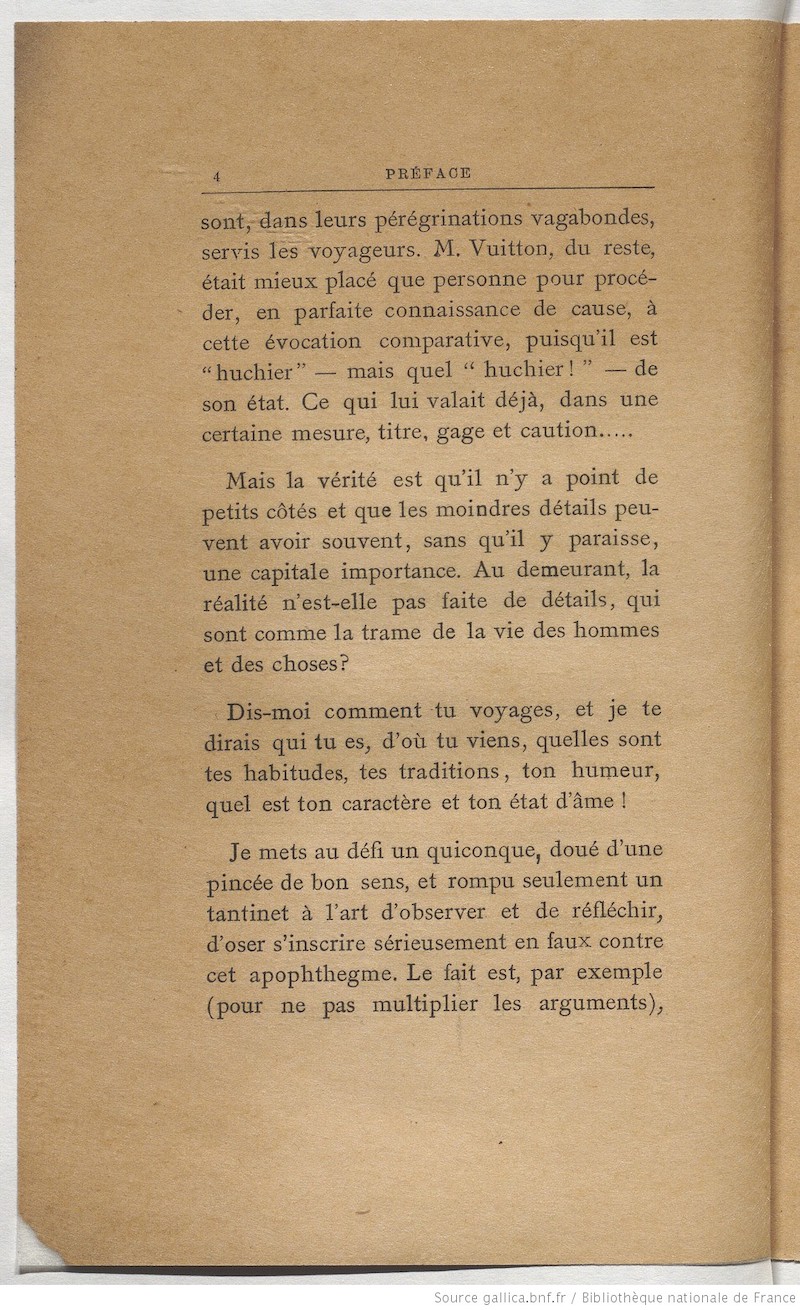We use cookies to make your experience better. To comply with the new e-Privacy directive, we need to ask for your consent to set the cookies. Learn more.
The origin of the brand
Louis Vuitton
CHILDHOOD
Louis Vuitton was born on February 2, 1821 in the small town of Anchay, in the Jura Mountains. As the son of a craftsman, he was immersed in the woodworking trade from an early age and was naturally interested in these different materials. Louis had a rather simple childhood, until he was 10 years old, marked by the death of his mother. Shortly after this disappearance, the young boy's father found a woman, but Louis could not stand it. It was probably due to too much pressure that he decided to leave the family home at the age of 14 and set off for Paris. The mail trunk was too expensive, so he started the journey on foot.
It took him more than a year to reach the capital, juggling odd jobs and small services to finance the trip, while trying to choose missions related to what really interested him, woodworking. His sensitivity and mastery of these materials will continue to grow throughout his journey. This journey, comparable to a year of apprenticeship, lasted two years and Louis Vuitton arrived in Paris at the end of 1835.
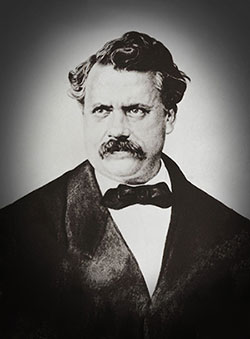
ARRIVAL IN PARIS
As soon as he arrived, young Louis found "odd jobs" and managed as best he could, until 1837 when the company Maréchal Emballeur-Layetier located at 213 rue Saint Honorés and specialising in the transport of dresses offered him a small job in exchange for a bed, two meals a day and a few pennies. The young boy did not think twice and began his career as a trunk-maker and packer without knowing it.
His mastery of wood, his listening skills and his motivation quickly made him the first clerk. The manufacture of these poplar boxes soon held no secrets for the young craftsman, who was now used to handling the most beautiful creations of the time and dealing with the most fashionable couturiers.
Between the Palais-Royal, the Faubourg Saint-Germain and the Élysée Palace, Louis Vuitton went directly to his customers to pack their tunics and met women such as the Empress Eugénie, who soon entrusted the young layetier with the task of packing her dresses. In 1851, Louis met Clemence-Emilie Parriaux, daughter of an old friend of his master. He fell in love with this woman and married her on 22 May 1854.
A few weeks later, the young couple decided to set up their own business at 34 rue des Capucines, near the couturiers of Place Vendôme and Rue de la Paix. The Louis Vuitton company was born and the worker who packed the lace became a trunk-maker.
CREATION OF THE FLAT TRUNK
Louis Vuitton wanted to make a name for itself from the start by specialising in fashion packaging. Crinoline dresses were the fashion of the day, and Louis set out to design shipping crates for these iron cages.
In 1858, the young packer broke away from the original trunk design with a domed bonnet by offering the first flat trunks. He also chose to abandon the large, heavy skins used as outer coverings, opting instead for a light, coated linen canvas. Add compartments to these new models, and you will discover the beginnings of the luxury trunk.
Invented by Louis Vuitton, these early flat trunks had great difficulty in distinguishing themselves from traditional trunks. However, means of transport were evolving and steam trains were beginning to affect more and more travellers. The flat trunks allowed these passengers to stack their luggage on top of each other without turning it upside down.
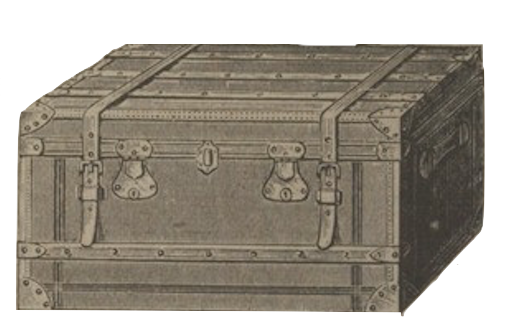
THE INVENTION OF THE LUXURY TRUNK BY LOUIS VUITTON
In 1859 Louis Vuitton bought land in Asnière sur Seine and built the first building of the famous Asniere factory. He lived above the workshops with Emilie for ten years and later built a small house in the courtyard. The number of workers increased rapidly and the workshop area exceeded 4,500 square metres in one year.
After having invented the flat trunk, Louis decides to add slats along the entire length of the bonnet and dresses the various lintels for the first time with curved brass nails. He added the first locks with single keys, then the first patterned canvas in 1872 (discover the different canvases). Signed brass parts and leather borders were also added to embellish the different models. At a time when these luggage were considered as transport boxes, Louis invented the travel trunk.
These luxury trunks were first presented to the general public at the 1867 World's Fair, and from then on orders poured in and the company really began to develop. In 1861, the best craftsman in the workshop, Émile Rabec, opened a branch for Louis Vuitton on the Avenue des Champs Élysées dedicated to fashion packing cases.
After five years in the boutique on rue Neuve des Capucines, the shop quickly became too small to handle the many orders and a move to the former jockey club at 1 rue Scrible was announced in 1871. Located in front of the grand hotel-café de la paix and in the heart of the city of Paris, this very large Parisian shop remained the main trunk maker's shop until the Second World War. (discover a visit of the workshop in 1900).
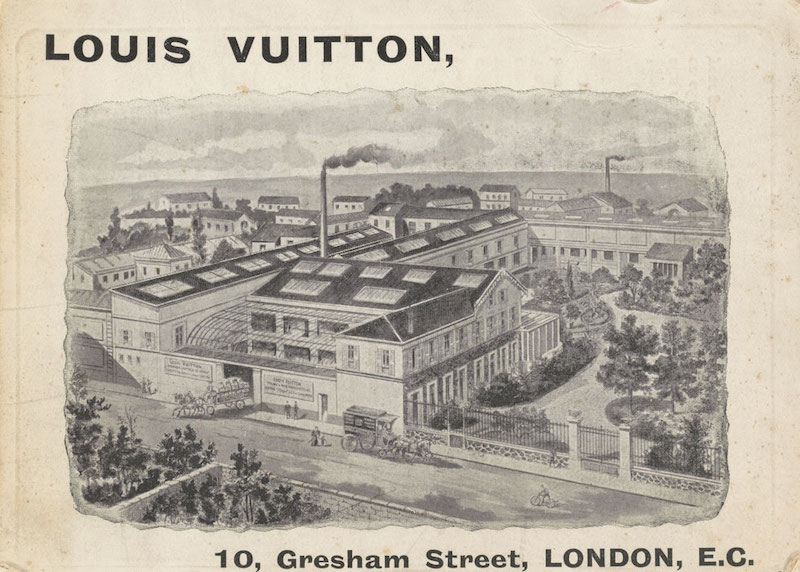
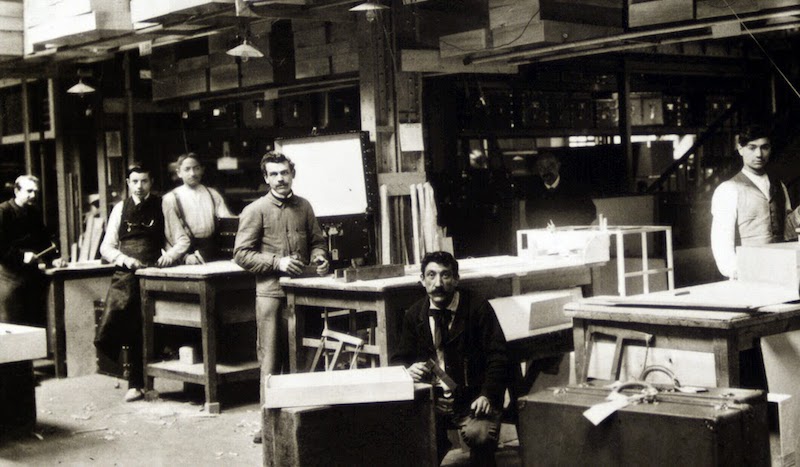
THE EARLY DAYS OF GEORGE VUITTON
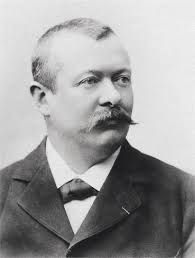
George Vuitton was born in 1857. International transport was becoming more and more important and Louis Vuitton was already thinking about taking over his young son's business. So in 1871, he decided to send George to study for a year in Jersey at the Eden House School of St Clement's. He returned in 1872, at the age of 15, with a very good knowledge of English and a first prize diploma signed by his teacher.
On his return, young George devoted himself to the factory, and discovered the different stages of trunk making, introduced by his father and the craftsmen. He learns the rudiments of the trade, and begins to get really involved in the family business. George soon accompanied his father on all his meetings and developed the various innovations with him.
In 1878, the third Universal Exhibition was held in Paris. This event was of paramount importance to the young George, who saw it as an opportunity to share the qualities of his trunks with the whole world. With his very good command of English, he hoped to develop the business founded by his father.
The exhibition was a great success for the company, the two craftsmen had been preparing for the event for two years, and the result far exceeded the objectives set. However, George was not only captivated by his stand at the exhibition, he quickly became interested in the young Josephine Patrelle whom he met there. Daughter of the inventor of "Arôme Patrelle", she was 18 and George 20 when they met. They announced their engagement a year later, and married in 1880. To mark this marriage, Louis Vuitton sold the business on rue Scribe to his son for 60,000 francs, formalising his son's significant involvement in the company.
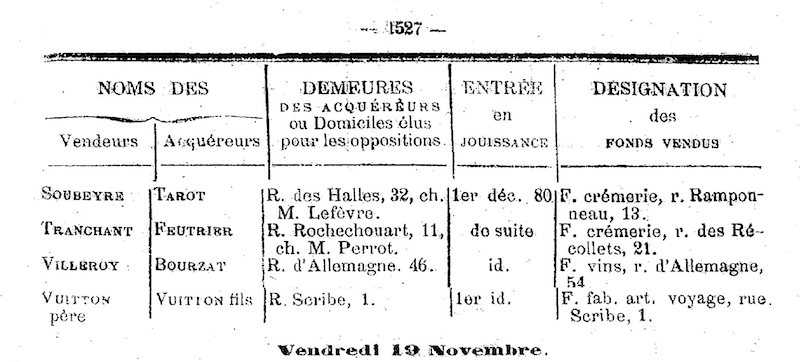
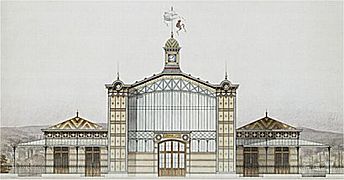
THE LOUIS MAJORELLE SALON
Louis Vuitton died on the evening of February 27, 1892. From then on, the company succeeded entirely to George. A few months after his death, he moved into the emblematic factory pavilion and called upon Louis Majorelle to redecorate the entire house: the mythical salon was born. Since then, the interior of this room has been decorated with a multitude of art nouveau designs, which were very fashionable at the time.
Mouldings in the same style run along the walls up to the ceiling, to join a floral decoration that covers the entire upper part of the room in pastel green tones. On the living room side, there is a large blue ceramic fireplace, with shapes emblematic of the style. A small chair and a Majorelle desk complete the ensemble.
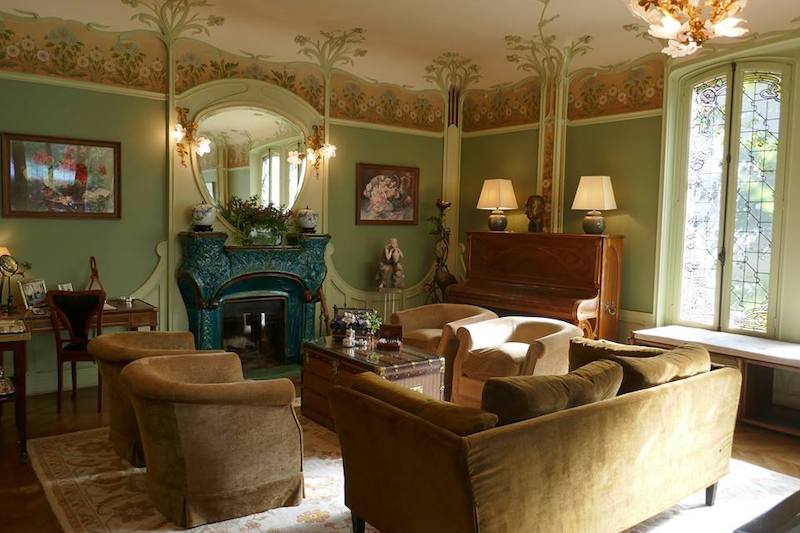
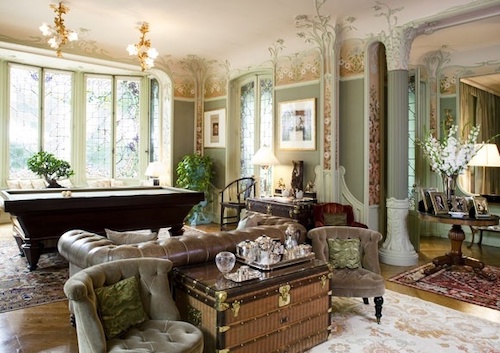
JOHN WANAMAKER AND LOUIS VUITTON
George absolutely wanted his trunks to cross the Atlantic, which is why he decided to go to America in 1893 for the Chicago World's Fair. He then realised that no trunk maker of his kind existed in the United States, and that only crude and voluminous products were on offer. He also met John Wanamaker during his trip, who owned some very large stores in New York. Five years later, George received a letter from the New Yorker, agreeing to represent his trunks in his various branches, but especially at the World's Fair in Omaha in 1898.
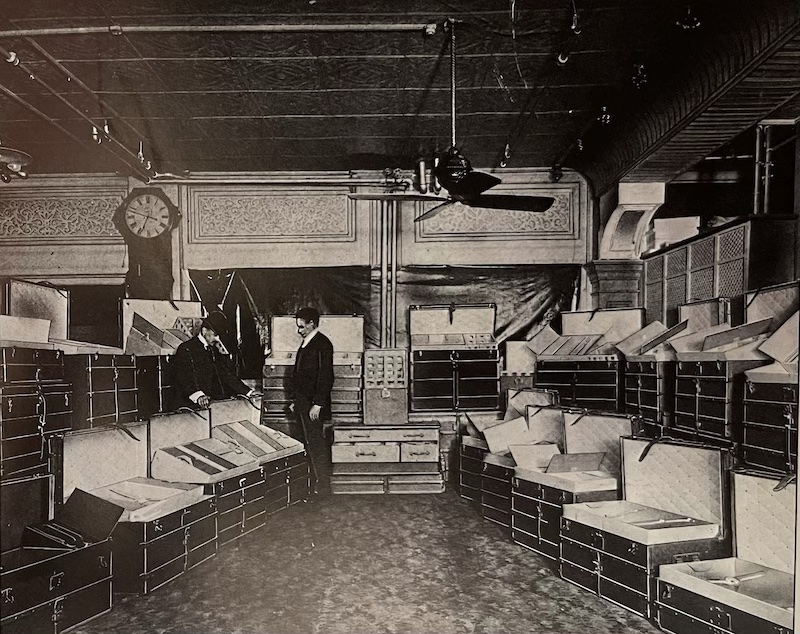
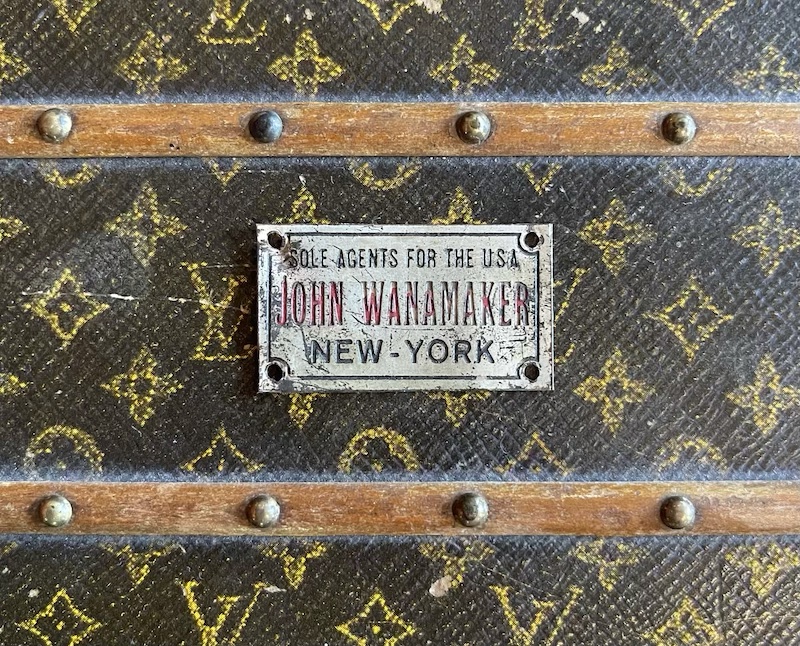
LE VOYAGE, PREFACE BY EMILE GAUTIER
In August 1892, George began a writing project dedicated to the different methods of travelling through time. This study was completed two years later and published under the title "Le Voyage" by E. Dentu éditeur. The preface is written by Emile Gautier and the work contains no less than 280 pages. It is today a reference for understanding the most distant habits of the different travellers in the world. The front cover shows a packer's shop, with a craftsman presenting 15th century chests. A hanging sign indicates that it is a Huchier (origin of the trunk maker) with the name Louis Vuitton in old French. This work will allow George Vuitton to be named an academy officer.
